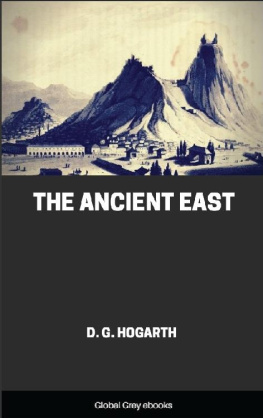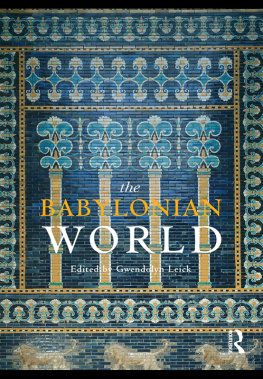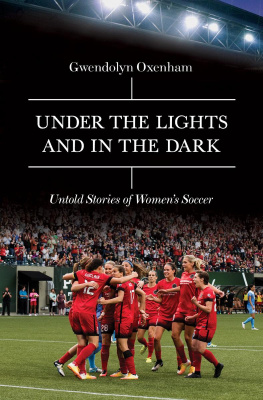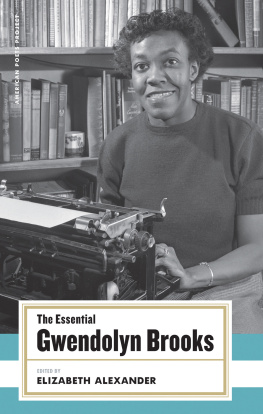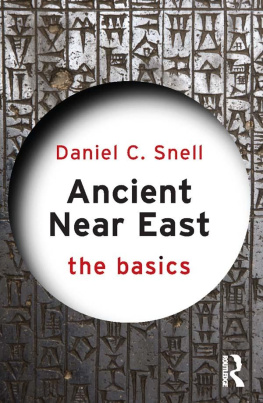
Whos Who in the Ancient Near East
THE ROUTLEDGE WHOS WHO SERIES
Accessible, authoritative and enlightening, these are the definitive biographical guides to a diverse range of subjects drawn from literature and the arts, history and politics, religion and mythology.
Whos Who in Ancient Egypt
Michael Rice
Whos Who in the Ancient Near East
Gwendolyn Leick
Whos Who in Christianity
Lavinia Cohn-Sherbok
Whos Who in Classical Mythology
Michael Grant and John Hazel
Whos Who in Contemporary Gay and Lesbian History
Edited by Robert Aldrich and Garry Wotherspoon
Whos Who in Contemporary Womens Writing
Edited by Jane Eldridge Miller
Whos Who in Contemporary World Theatre
Edited by Daniel Meyer-Dinkegrafe
Whos Who in Dickens
Donald Hawes
Whos Who in Europe 1450-1750
Henry Kamen
Whos Who in Gay and Lesbian History
Edited by Robert Aldrich and Garry Wotherspoon
Whos Who in the Greek World
John Hazel
Whos Who in Jewish History
Joan Comay, revised by Lavinia Cohn-Sherbok
Whos Who in Military History
John Keegan and Andrew Wheatcroft
Whos Who in Modern History
Alan Palmer
Whos Who in Nazi Germany
Robert S. Wistrich
Whos Who in the New Testament
Ronald Brownrigg
Whos Who in Non-Classical Mythology
Egerton Sykes, revised by Alan Kendall
Whos Who in the Old Testament
Joan Comay
Whos Who in the Roman World
John Hazel
Whos Who in Russia since 1900
Martin McCauley
Whos Who in Shakespeare
Peter Quennell and Hamish Johnson
Whos Who of Twentieth-Century Novelists
Tim Woods
Whos Who in Twentieth-Century World Poetry
Edited by Mark Willhardt and Alan Michael Parker
Whos Who in Twentieth-Century Warfare
Spencer Tucker
Whos Who in World War One
John Bourne
Whos Who in World War Two
Edited by John Keegan
Whos Who in the Ancient Near East
Gwendolyn Leick
First published 1999
by Routledge
2 Park Square, Milton Park, Abingdon, Oxfordshire OX14 4RN
Simultaneously published in the USA and Canada
by Routledge
711 Third Avenue, New York, NY 10017
1999, 2002 Gwendolyn Leick
Routledge is an imprint of the Taylor & Francis Group
The right of Gwendolyn Leick to be identified as the Author of this Work has been asserted by her in accordance with the Copyright, Designs and Patents Act 1988
Typeset in Sabon by Routledge
All rights reserved. No part of this book may be reprinted or reproduced or utilised in any form or by any electronic, mechanical, or other means, now known or hereafter invented, including photocopying and recording, or in any information storage or retrieval system, without permission in writing from the publishers.
British Library Cataloguing in Publication Data
A catalogue record for this book is available from the British Library
Library of Congress Cataloging in Publication Data
A catalog record for this book has been requested
ISBN 978-0-415-13231-2
Contents
1 Mesopotamia: 3rd Millennium
2 Near East: 2nd Millennium
3 Anatolia and Syria: 1st Millennium
4 SyriaPalestine: 1st Millennium
This book was the idea of Richard Stoneman, editor of the Classics List at Routledge. It follows the format of the Whos Who series, being a biographical dictionary of people who were important in the history of the ancient Near East and whose memory has survived the long passage of time that separates their world from ours. Many of these societies were to some extent literate and there are documents in the various languages of the region. Although by no means all original sources have as yet been translated and analysed, there is a considerable body of transcribed material, secondary and tertiary literature. For this volume, a reference book that is also meant to provide information for non-specialists, I have not used any unpublished original texts but have relied instead on works that are relatively easy to access, such as the Cambridge Ancient History series and similar historical treatises, supplemented by more specialised studies and articles. The sources of my information are listed under each entry. The entries often reflect the opinions and conclusions of the quoted authors rather than my own and should give an idea of the current state of scholarship. Some periods and places have attracted more attention than others. This is generally determined by the availability of sources; new excavations, and particularly the discovery of archives, force a revision of the always provisional conclusions.
In single-author reference works the specialisation of the writer is both a strength and a weakness. As an Assyriologist I have more access to Mesopotamian material and there are proportionally more entries on Babylonia and Assyria in this book. For Iranian and Anatolian history I have relied more on the standard works.
The majority of entries concern kings and local rulers. As explained in my Introduction it was the rulers prerogative to perpetuate his name. However, like a contemporary Whos Who, I have also included intellectuals, writers, businessmen, generals and a few ecclesiasts. I have included as many women as I could find, though merely private individuals are excluded. All these categories can be accessed through the index. Some entries were included to direct the readers attention to an interesting article or book on a period or subject, and the specific entry serves as representative of an often much larger cast of people. On the whole, the selection aims to be both orthodox in its general range and individualistic, especially with respect to private individuals.
As far as the actual names of persons are concerned, I have not translated them; some, especially the Babylonian and Assyrian ones, have a discernable meaning, others do not. For works specifically concerned with personal names see Ranke 1905, Stamm 1939, Tallqvist 1966, Laroche 1966, Lipinski 1994, Gelb et al. 1943, Mayrhofer 1979, Archi 1988, Limet 1968, di Vito 1993.
Chronology
The chronological framework is somewhat wider than in most popular works on the ancient Near East. I have gone beyond the traditional cut-off point, the death of Alexander in 323, to include the Hellenistic period to the second century BC because I believe the reign of Macedonian rulers did not produce a sharp break in the cultural continuity of the Near East and that such an assumption projects an over-estimation of Greek impact. I have therefore included Seleucid, Ptolemaic and Parthian rulers although the various Anatolian principalities and minor states of the second half of the 1st millennium BC are admittedly under-represented.
There is still considerable scholarly disagreement as to all dates up to the middle of the 2nd millennium. I have usually followed the so-called Middle Chronology, as used by the Cambridge Ancient History and A. Kuhrts The Ancient Near East (2 vols, 1995), but have occasionally adopted the one preferred by the author of a particular source, as indicated in the bibliographical reference. The Outline of the main historical periods that appears after the Glossary is intended as a very general guide; for more detailed tables see the






